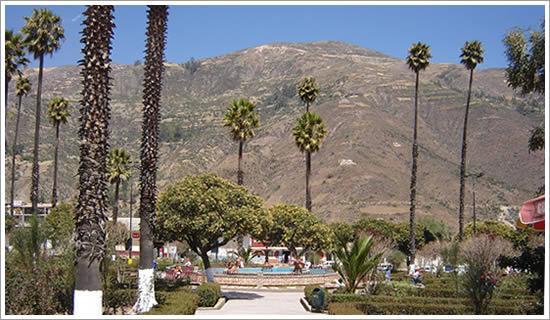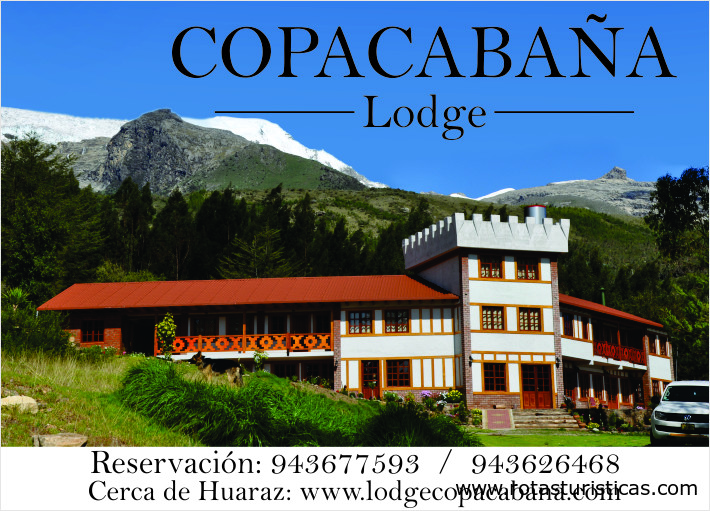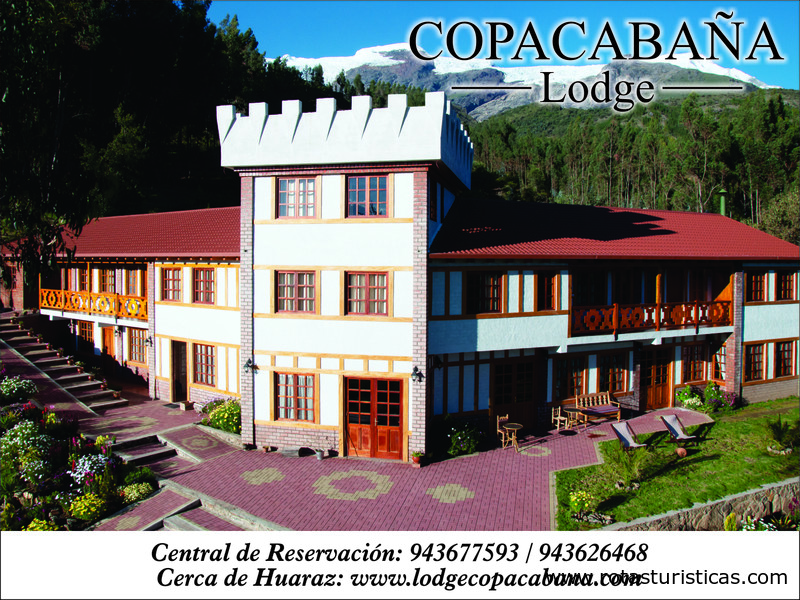Carhuaz, Ancash, Peru
Suggest Place to Visit
1215
Track to location with GPS |
 |
Main Historical Events of the Province of Carhuaz
Archaic Period.- Probably the first nomadic men arrived at the Callejón de Huaylas around the year 12,000 a.c. According to the evidence found, such as the cave art paintings in many caves (machés) in the Carhuaz province.
Initial Period.- The first villages and temples appear between the years 5 000 and 1 000 a.c. and probably in this period the village of Huauyanca appears, being the first human settlement from which the current city of Carhuaz comes, having subsequently received the influence of the Wari and Recuay cultures.
Late Horizon Period.- In this period the Empire of the Tawantinsuyo appears, which during the government of Pachacuti Inca Yupanqui the village of Huauyanca was conquered and annexed to the Empire between the years 1438 and 1471 AD.
Period of the Conquest.- Between January 22 and 23, 1 533 Hernando Pizarro accompanied by the Spanish chronicler Miguel de Estete and a group of Spaniards, on their journey to Pachacamac, arrived at “Almajar”, which was no other town than Huauyanca . Why Almajar? Because probably the Spaniards observed plantations similar to the marjo tree whose flowers are greenish-yellow in color and when asking the natives about these plants, they answered "OJARHUASHMARCA", the Spaniards upon hearing this cast it as CARHUAZ, a name that lasts to this day.
Later this town was located further south, that is, where it is currently; But in the year 1 701 in the month of January the Shonquel lagoon overflowed, devastating much of the Chucchún area, Yanamarca and the south side of the city, later Francisco Pizarro would be passing through Carhuaz towards Cusco the first days of the month September 1533.
Period of the Colony and the Viceroyalty.- During this time, illustrious characters arrived in Carhuaz, both from the clergy and the military, being able to mention Bishop Toribio Alfonso de Mogrovejo.
Period of Emancipation and Independence.- Carhuaz supported the emancipation campaign in various ways, both with General San Martín's envoys, and with the liberator Simón Bolívar who remained in Carhuaz from May 16 to 22, recruiting men of 12 to 40 years of age in the various battalions.
Period of the Republic. = Carhuaz is the scene of various historical events such as: the battle of Buín between the forces of the restorer army of General Agustín Gamarra and the Peruvian-Bolivian Confederation of General Santa Cruz. In 1885 the indigenous worker in the mines of Ucchu; Pedro Celestino Cochachin de la Cruz Huarca, better known as Ucchu Pedro, revolted supporting the indigenous revolution of Pedro Pablo Atusparia. During the War with Chile, the Carhuacan ladies in April 1883 sewed 2,200 shirts on the orders of Colonel Isaac Recavarren and on June 18, 1883, General Andrés Avelino Cáceres arrived in Carhuaz, spending the night in the Plaza de Armas. In 1940, during the border conflict with Ecuador, many Carhuacinos participated defending our territorial integrity and, in the same way, in the last events of Cenepa in the Cordillera del Cóndor.
2,650 meters above sea level and 34 km north of Huaraz is Carhuaz, a traditional city built in the mestizo style. Its wide Plaza de Armas houses modern constructions such as the Civic Center and the Sanctuary of the Virgen de las Mercedes, whose festival is celebrated on September 24.
In Carhuaz, the climate reaches its highest quality, the fields are exuberant, the lands are fertile and with abundant irrigation water, produce corn, vegetables, vegetables, some varieties of fruit trees such as apple and peach.
Along the 34 kilometers that separate it from Huaraz, there are small and picturesque villages, excellent tourist services, picturesque fields and orchards, framed by views of imposing beauty and always as a backdrop, the Cordillera Blanca y Negra, which is They are always present and changing, as proof of this from any point on the road you can see the snowy Hualcán, 6,120 meters, and the 6,188 meters Copa.
Among the most important tourist attractions of Carhuaz are the following:
THE OLYMPIC POINT
At 4,890 meters above sea level, located on the Carhuaz - Shilla - Chacas highway, where you can observe and feel the perpetual snow and the crystalline waters of colorful lagoons, as well as practice the ´´Siqui Sky´´ or ´´Poto Esqui´´, in other words; slide sitting on a mat in the snow.
THE QUEBRADA DE ULTA
This stream is located on the Carhuaz - Shilla - Chacas Highway, before reaching the Olympic Point flanked on the north by the imposing Huascarán and on the south by the majestic Huálcan.
AUQUISCOCHA LAGOON AND WATERFALLS
Lagoon located in the northern part of Nevado Hualcán at 4319 meters above sea level, it is surrounded by ice, rocks and exotic vegetation. Its waters run between the rocks forming spectacular waterfalls and waterfalls. Its access is through the Carhuaz - Shilla - Chacas Highway, detour on the bridle path passing Catay, approximately three hours' walk.
SHONQUIL PAMPA
Located at the foot of the Nevado Hualcán, a two-hour walk from the Caserío de Hualcán, it is probably the bed of a lagoon that destroyed the ancient town of Carhuaz in Pre-Inca or Inca times.
NEVADO DE HUALCAN AND ITS LAGOONS
With 6122 meters of altitude, with perpetual snow, approximately two hours from the Pampa de Shonquil; It is home to paradisiacal lagoons such as Rajupaquina, 513, Cochca and Yanahuanca.
NEVADO COPA AND LAGUNA LEJIACOCHA
With 6188 meters of altitude, at the base of which the Lejiacocha Lagoon is located, access is through a bridle path starting from Vicos and Copa Grande.
QUEBRADA HONDA
This creek is located on the Carhuaz - Marcará - Chacas highway, in the southern part of Nevado Copa, its highest point is Portachuelo at 4850 meters above sea level.
LAGOONS OF HUALLCACOCHA AND CHEQUIACOCHA
These lagoons are located in the southern part of the Quebrada de Ulta at 4850 meters above sea level, in its highest part, its access is through a bridle path, with a walk of approximately three hours.
THE SUPE JKALKA (Devil's Stone)
It is a concave, convex rock, in the concave part there is a carved figure of a devil, with the naked eye it is not visible, but when you pour water or squeeze it with herb leaves it becomes visible. It is located in the southern part of the City of Carhuaz, in the Tambo neighborhood, approximately a 10-minute walk from the Plaza de Armas.
EL BALNEARIO DE BRUJA ARMANAN (Place where witches bathe)
This spa is located in the northern part of Carhuaz, approximately 1 km from the Plaza de Armas, via the Carhuaz - Caraz highway. Through time it has generated legends and myths.
Comments
We don´t have yet any comments about:
City of Carhuaz
City of Carhuaz
Be the first to leave a comment as it is very important to inform other people
Outros locais a visitar
Within a radius of 20 km from:City of Carhuaz
Chancos Baths |
| 15,2 Km |
 |
Yungay, Also Called Yungay Hermosura |
| 18,5 Km |
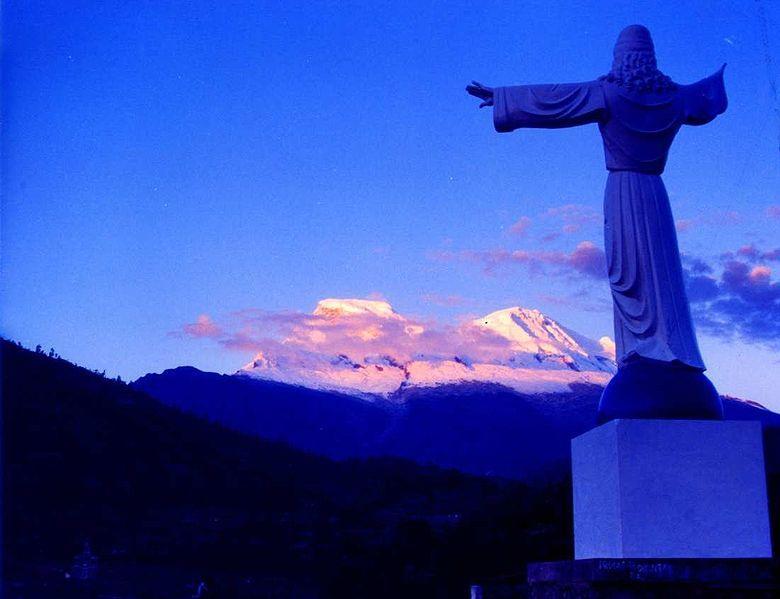 |
Yungay, Ciudad Renaciente y Turistica |
| 19,4 Km |
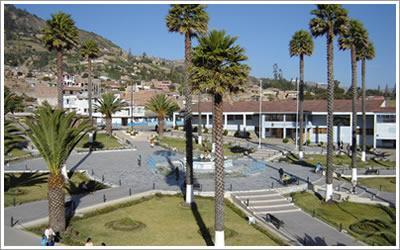 |
Hotel reservation near City of Carhuaz within a radius of 20 km
Why to book with TOURISTIC ROUTES
The best prices
Our partnerships with the world´s largest operators offer research on the best market prices.
More options
At Rotas Turisticos you can book the hotel, buy the air ticket, book the transfer from the airport to the hotel and vice versa, book the local excursions, rent the car, take travel insurance and consult the places to visit and where to go.
Holiday Tips & Destinations
Hundreds of holiday destinations with all the options that allow you to easily choose the destination that best suits your dream vacation.
TOURISTIC ROUTES
Links


